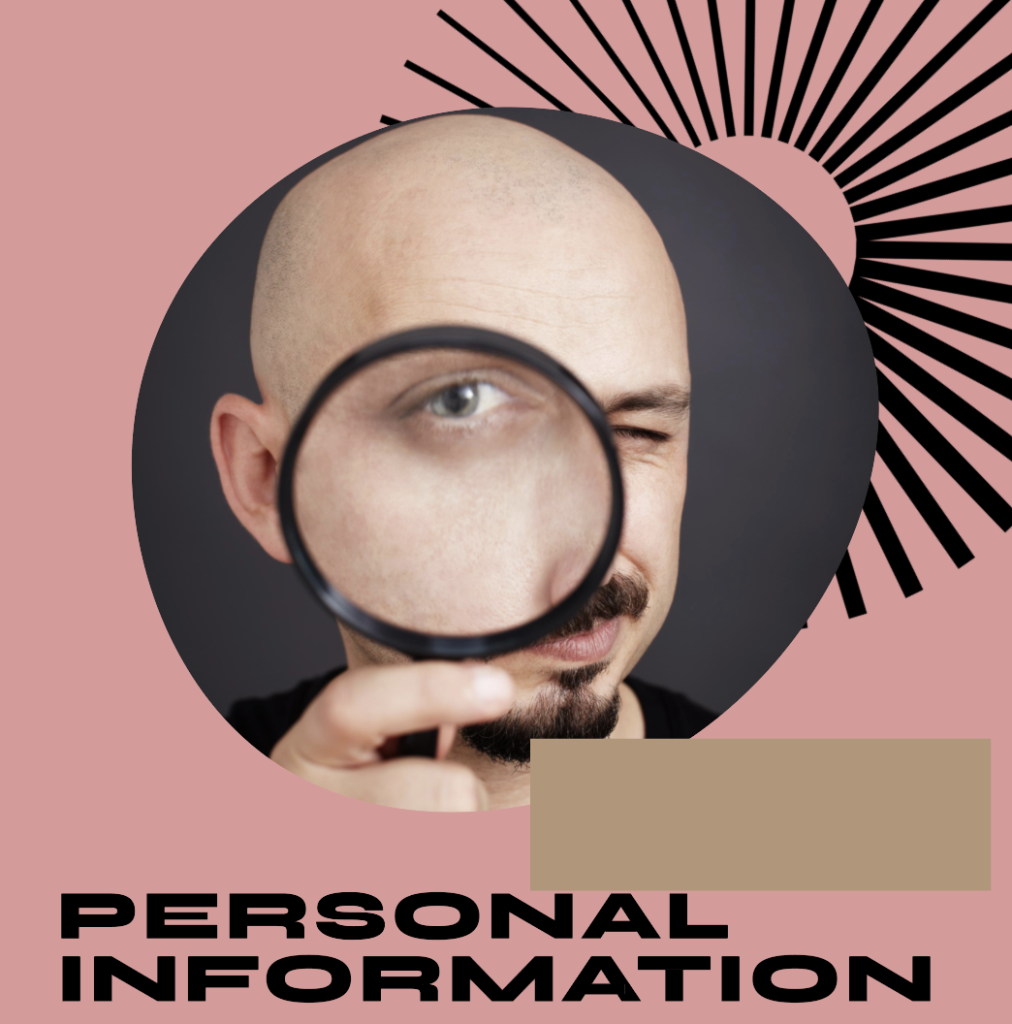Personal data has become a valuable commodity and high risk data to be held by an organization. From online shopping to social media, we constantly share information about ourselves without realizing the extent of the data we disclose. But what exactly is personal data, and why is it crucial to safeguard it? Let’s start by figuring few subjects within personal data as a category of data classification within the world of infoSec, and understand personal data and explore its significance in the world of information security.
Understanding Personal Data
Personal data refers to any information that can directly or indirectly identify a specific individual. This can include a wide range of data, such as full names, addresses, contact details, date of birth, national identification numbers, financial information, health records, and more. Even seemingly innocuous details like IP addresses or social media posts can be classified as personal data if they can be linked to an individual.
The Role of Personal Data in Cybersecurity
Personal data is an integral part of cybersecurity considerations. Understanding what data constitutes personal data is the first step in safeguarding it from potential threats and unauthorized access. In the realm of cybersecurity, protecting personal data is crucial for several reasons:
- Data Breaches: Cybercriminals target personal data for various malicious purposes, such as identity theft, financial fraud, or selling data on the dark web. Data breaches can have severe consequences for both individuals and organizations.
- Regulatory Compliance: Many countries and regions have enacted data protection laws that mandate organizations to handle personal data responsibly. Failure to comply with these regulations can result in significant fines and reputational damage.
- Identity Theft: Personal data can be exploited to impersonate individuals, gaining unauthorized access to accounts, financial resources, or sensitive information.
- Phishing Attacks: Cybercriminals use personal data to craft convincing phishing emails, increasing the likelihood of tricking individuals into revealing sensitive information or installing malware.

Learning from Personal Data Incidents
Personal data incidents have become all too common in the digital landscape. Organizations and individuals alike can learn valuable lessons from these incidents to strengthen their data protection strategies. Let’s explore some essential lessons:
- Data Minimization: Collect only the necessary personal data and refrain from storing excessive information. The less data you have, the less there is to protect.
- Encryption: Implement robust encryption measures to secure personal data, especially during storage and transmission. Encryption ensures that even if data is compromised, it remains unreadable to unauthorized individuals.
- Access Control: Restrict access to personal data based on the principle of least privilege. Only authorized personnel should have access to sensitive information.
- Data Retention Policies: Establish clear data retention policies to determine how long personal data should be kept. Proper data disposal methods should also be in place.
- Employee Training: Educate employees about the importance of data protection and cybersecurity best practices. Human error is a common factor in data breaches, so awareness training is crucial.
Data Protection Regulations and Compliance
To address the growing concerns around personal data privacy and security, governments and regulatory bodies have introduced data protection laws and regulations. These laws aim to safeguard individuals’ rights and ensure responsible data handling by organizations.
One prominent data protection regulation is the General Data Protection Regulation (GDPR), implemented by the European Union (EU). GDPR enforces strict requirements for organizations that process personal data of EU residents. It empowers individuals with more control over their data, including the right to access, rectify, and erase their information.
Other countries and regions have also enacted data protection laws, such as the California Consumer Privacy Act (CCPA) in the United States and the Personal Information Protection and Electronic Documents Act (PIPEDA) in Canada. These regulations mandate transparency, data breach notifications, and stringent security measures to protect personal data.
Safeguarding Personal Data in the Digital Age
As cyber threats continue to evolve, protecting personal data has become an ongoing challenge. Cyberattacks, data breaches, and identity theft incidents highlight the need for robust cybersecurity measures. Organizations must adopt a proactive approach to safeguard personal data and continuously update their security protocols to stay ahead of emerging threats.
To achieve comprehensive data protection, consider the following strategies:
- Regular Security Audits: Conduct frequent security audits to identify vulnerabilities and areas of improvement. Address any weaknesses promptly to minimize the risk of data breaches.
- Secure Data Storage and Transmission: Implement strong encryption methods for data storage and transmission. Encryption ensures that even if data is intercepted, it remains unreadable to unauthorized individuals.
- Multi-Factor Authentication (MFA): Enforce MFA for user accounts to add an extra layer of protection. MFA reduces the risk of unauthorized access, especially in the event of password leaks.
- Employee Awareness and Training: Train employees on data protection best practices and cybersecurity awareness. Employees play a significant role in maintaining data security and should be equipped to recognize and report potential threats.
- Incident Response Plan: Develop a comprehensive incident response plan to handle data breaches effectively. Timely and appropriate actions can mitigate the impact of a breach on both organizations and individuals.
Example of Personal Data
Here few ideas to better understand why data is not the same and especially personal data which can lead to all kind of possible risks for our users, clients and employees.
| Data Name | Data Description | Possible Risks (of Data Breach) |
|---|---|---|
| Full Name | The individual’s complete name. | Identity theft, phishing attacks, impersonation. |
| Date of Birth | The individual’s date of birth. | Identity theft, age-related fraud, social engineering, using DOB for identity theft |
| Social Security Number | Unique identifier issued by the government. | Identity theft, financial fraud, tax fraud. |
| Address | Residential or mailing address of the individual. | Physical security threats, stalking, identity theft. |
| Email Address | The individual’s email address. | Phishing attacks, spam, unauthorized access, spyware, malicious attacks |
| Phone Number | The individual’s phone number. | Identity theft, unauthorized access, spam calls, threats, monitoring, spyware |
| Financial Details | Bank account numbers, credit/debit card information. | Financial fraud, unauthorized transactions. |
| National ID | National identification number or passport number. | Identity theft, fraudulent activities. |
| Medical Records | Health-related information, medical history. | Privacy violations, blackmail, medical identity theft. |
| Biometric Data | Fingerprints, facial recognition data, iris scans. | Identity theft, biometric data misuse. |
| a cookie ID & Content | data that is used on user computer to be used at later stage. | Identity theft, Phishing attacks, impersonation |
| Internet Protocol (IP) address | Information that allow you spot and identity an individual. | Identity theft, Phishing attacks, impersonation, geo location extraction |
| location data | Similar to IP, ability to get user GPS location or nearby address via other means of security | Physical safety, real world physical threat |
| Personal Photos | Part of verification process, or photos user uploads online as part of a service | Physical safety, real world physical threat, identity theft |
| Salary and contracts | Personal information like salary, contract information could be classify as PI. | Physical safety, real world physical threat, identity theft |
As you can see there are a lot of possible personal information (PI) other there that can be used while we do a data classification of our data assets. However it’s important to mention a few things in the process, first and foremost that this list is not limitation to other pieces of data that might be consider PI, this is why consulting an expert in cyber security is crucial through creating the organization security posture. One more important piece of information would be that there are informations that a similar to PI but are not PI, for example a company email, a company phone number.

I am a software engineer with 20 years of experience of writing code, Software languages, Large scale web application, security and data protection of online digital assets in various software systems and services. I’ve decided to write and share my interests in cyber security online and information security to help and improve white hat security, safety and privacy of our online digital assets, As companies, as individuals or experts providing services. In here you’ll be able to read freely about cyber security threats, detections, common problems, services, news and everything related to information security and cyber security – enjoy and feel free to contact me via the contact page for any question.
